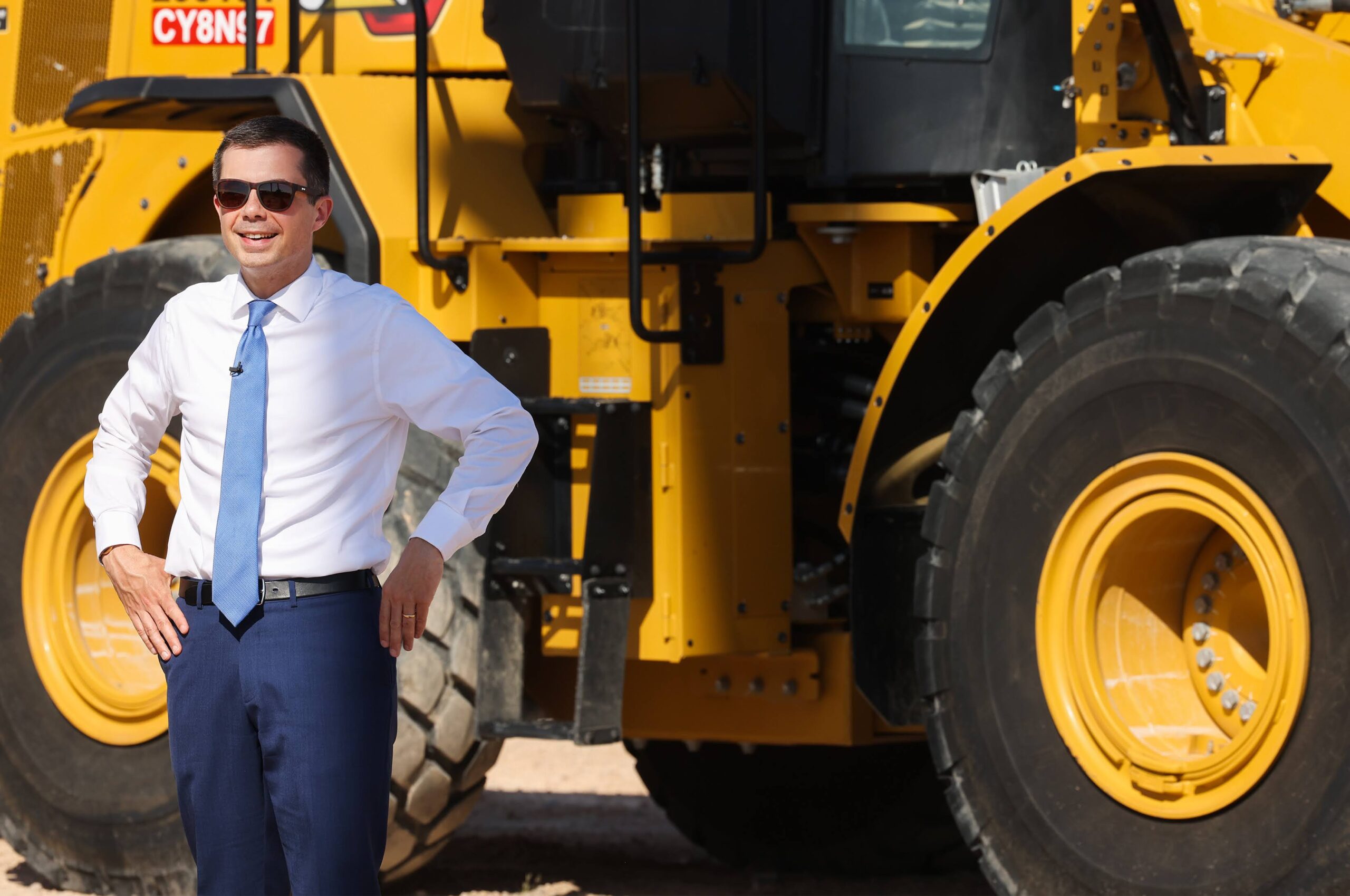Buttigieg kicks off Nevada visit by highlighting major Las Vegas transit project

U.S. Secretary of Transportation Pete Buttigieg kicked off a three-day trip to Nevada on Monday for the groundbreaking of a new $378 million transit project in Las Vegas — the largest singular transit investment the Regional Transportation Commission of Southern Nevada (RTC) has ever received.
The U.S. Department of Transportation awarded the RTC $149 million to improve public transit access along a 12.5 mile stretch of Maryland Parkway from the South Transit Terminal to the Medical District, an area that is home to some 63,000 residents.
This funding, secured via the Bipartisan Infrastructure Law, will transform 7 miles of the parkway’s bus line — reducing the number of lanes from three to two with a dedicated shared bus-bike lanes, while creating 42 transit shelters, widening sidewalks and improving lighting. The expanded bus service plans to run 24/7 and will include 15 hydrogen fuel cell electric buses funded via another federal grant.
“We are saving people money. We are saving people time, and we are better connecting this community,” Buttigieg said in an interview with The Nevada Independent. “Even if you don’t use this new rapid transit system, you’re going to be better off.”
The Monday visit kicked off a busy three-day trip to Nevada for Buttigieg, who, on Tuesday, headed to Reno to highlight construction starting on replacing a nearly 100-year-old bridge on Arlington Avenue and on Wednesday will speak at the annual Lake Tahoe summit. It’s all part of an effort by the Biden administration and Nevada Democrats to highlight the roughly $4 billion in infrastructure improvements coming to the state after the 2021 passage of the infrastructure bill.
The bus route along Maryland Parkway currently supports 9,000 daily riders — the fourth highest ridership in Southern Nevada. After the planned infrastructure improvements are made, the RTC estimates that ridership will jump to 13,300 daily passengers, and that it will slash travel time for transit riders by about 20 percent. Nearly 30 percent of residents along the Maryland Parkway Corridor do not have access to a vehicle, making it what Clark Country calls a significant “transit dependent” area.
The project, estimated to be completed by fall 2026, will support an approximate 95,000 jobs, and nine local minority owned firms will participate in the program via the Disadvantaged Business Enterprise program, according to Rep.Steven Horsford (D-NV), securing over $31 million dollars in contracts to benefit a part of Las Vegas where the poverty rate is as high as 35 percent.
“We've got to make sure everybody gets a fair shot at participating in the economic growth here, and that means bringing dollars to places that didn't get much investment in the past,” Buttigieg said.
Buttigieg last visited Nevada in April for the groundbreaking ceremony of a high-speed rail project connecting Las Vegas to Southern California, led by the company Brightline West. The project, which has been in development for nearly 20 years, received a $3 billion grant from the Biden administration.
The Maryland Parkway project also aims to address climate concerns by becoming the first RTC project with a dedicated fleet of zero-emission vehicles, while expanding shade via new bus shelters and trees on sidewalks and in meridians. Las Vegas is one of the nation’s fastest-warming cities, and even nighttime temperatures can remain dangerously hot.
In 2019, the RTC rejected a highly popular (but more expensive) proposed $1 billion light rail option in lieu of the expanded bus service.
State officials hope Brightline’s high-speed project — estimated to be completed in time for the 2028 Los Angeles Summer Olympics — will help alleviate traffic on Interstate 15.
Democratic members of Nevada’s congressional delegation including Sen. Catherine Cortez Masto and Reps. Dina Titus, Susie Lee and Steven Horsford joined Buttigieg at the ceremony at Boulevard Mall.
“It is important that we continue to recognize this is a major corridor, and it needs to be rejuvenated,” Cortez Masto said. “This is where people come together for work, for social gatherings, for jobs, you name it. That’s why we have to continue to invest in our communities.”
